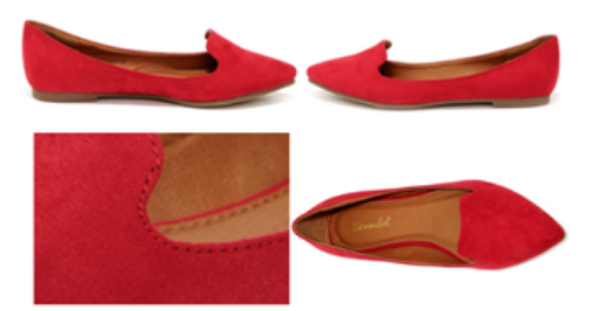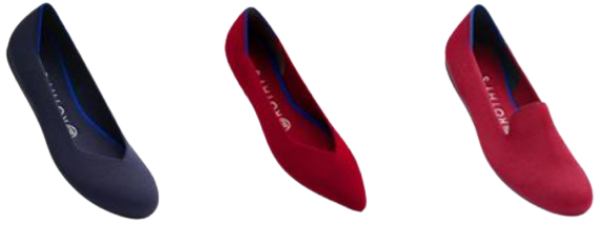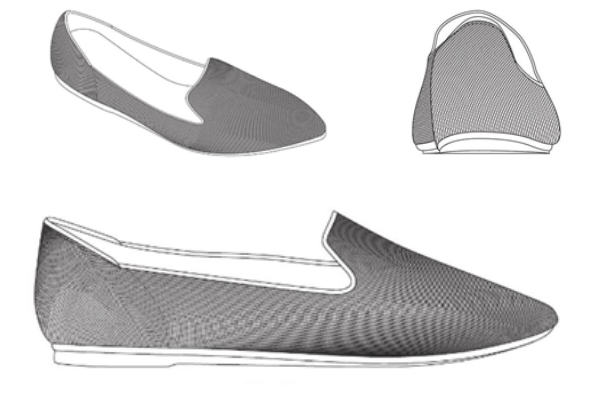Introduction
Registered designs protect the aesthetic attributes of new products. They are not examined for validity before grant, and therefore validity is often tested for the first time in court. Consequently, this has led to the misconception that registered designs are difficult to enforce compared to other intellectual property rights such as patents. However, in a recent judgement from the Intellectual Property and Enterprise Court in the UK a Registered Community Design (RCD) has been found valid and infringed. Somewhat surprisingly, the judgement also found that Unregistered Community Design (UCD) right in the same product was not infringed due to lack of copying. The judgement goes to show that registered design protection continues to be a valuable and reliable intellectual property asset in the right circumstances.
The facts
In 2017, Rothy’s Inc., a US shoe manufacturer, designed and released a ladies’ “ballerina” shoe having an upper made of heavy knitted yarn. Rothy’s filed for protection for their ballerina shoe in the EU under Registered Community Design No. 4500932-0002 (“the RCD”). Around April 2019 Austrian shoe manufacturer Giesswein Walkwaren AG released their own range of ballerina shoes having knitted uppers. Rothy’s sued Geisswein for infringement of both the RCD and the UCD in the ballerina shoe.
Registered Community Design
Rothy’s RCD contained seven black-and-white line drawing representations of the ballerina shoe, as shown below.
One key point of contention was the interpretation of the crossed black lines shown forming the upper. Geisswein argued that these lines merely indicated the contours of the shoe or indicated that the upper was made from a woven fabric. However, in the end it was found that the lines in fact refer to a knitted fabric, as the lines appear to stretch and radiate over the surface contours.
Two pieces of prior art were considered, both of which were ballerina shoes. The first prior art shoe, shown below, had a suede leather upper and a deep heel around two-thirds covered with suede. The presence of the heel was found to contribute greatly to the overall impression of the prior art shoe, whilst the requirement that the upper was made of a heavily knitted fabric contributed greatly to the overall impression of the RCD. Accordingly, the RCD created a different overall impression and was therefore valid over the first prior art shoe.
The second prior art shoe, shown below, was similar to the first but had a much shorter heel. Again, the court found that the knitted upper in the RCD created a different overall impression to the relatively smooth and plain impression of the second prior art shoe. Accordingly, the RCD also had individual character over the second prior art shoe, and was therefore valid.
Geisswein’s ballerina shoe, shown below, had an upper made from a heavy knitted yarn. Given the absence of ballerina shoes having such knitted uppers in the prior art, it was found that this aspect of the design would have been very prominent to the informed user. Accordingly, the use of a knitted yarn upper in a ballerina shoe was enough to infringe the RCD.
Clearly, the judgement puts much weight on the fact that the RCD claims a knitted fabric. The judgement therefore goes to show the importance of correctly drafting the representations of the design. Had a simple cross-hatched pattern been chosen to depict the material of the upper, it is likely that the court would not have interpreted the design to claim a knitted material, and therefore the design may have been invalid.
Registered design holders can take comfort from this decision, as it demonstrates that the courts will adopt a pragmatic approach to the construction of and weight given to features in design representations.
Unregistered Community Design
A UCD provides the same scope of protection as an RCD. Given that Rothy’s RCD was found valid and infringed, one might reasonably expect that infringement of the corresponding UCD in the ballerina shoe would be clear cut. However, in order to infringe a UCD the right holder must also prove that the UCD was deliberately copied.
Rothy’s ballerina shoe (the “subject” shoe) is shown in the image above. Rothy’s had launched the subject ballerina shoe with a number of other ballerina shoes with knitted uppers having different toe and topline shapes as part of a limited edition run for Black Friday in 2017. The other shoes in the range are shown below.
Geisswein is a family business run by two brothers, Markus and Johannes. Markus and Johannes Geisswein had been aware of Rothy’s launch of this range of shoes from social media research. Markus Geisswein subsequently bought a number of these shoes from Rothy’s to study with the aim of developing a competing ballerina shoe with a knitted upper. However, Markus Geisswein was unable to obtain the subject ballerina shoe, as this had sold out early in the run.
The purchased shoes were then provided to Johannes Geisswein and a freelance designer, Adi Zuk. Whilst the Geisswein ballerina shoe was clearly commissioned by the Geisswein brothers, who had both at least seen the subject ballerina shoe, it was found that the actual designer of the Geisswein ballerina shoe was Ms Zuk. There was clear evidence that Ms Zuk was not provided with the subject ballerina shoe, and had in fact designed the Geisswein ballerina shoe without any knowledge of it. Accordingly, the chain of copying was broken and UCD infringement could not be established.
The judgement goes to show that it is not enough to simply compare two similar products and infer that copying has taken place. In fact, it is clear that the degree of separation between the designer and the source material is a highly relevant factor in establishing whether copying occurred. Accordingly, there is a risk that in some cases it might not be possible to fully substantiate the act of copying.
Conclusions
Rights holders can be reassured from this decision that the courts are prepared to adopt a pragmatic approach to the construction of registered designs, and will enforce them where circumstances allow. However, it is clear that care must be taken over the preparation of the representations, so as to ensure the correct interpretation is conveyed to the court. The judgement should also cause rights holders who rely mainly on unregistered rights to think twice about their protection strategy. Any such companies would be well advised to obtain registered protection for their commercially valuable designs.
At Marks & Clerk, our designs experts regularly advise our clients on how to obtain the most from their design registrations and filing strategies. If you would like to know more about design protection strategies, whether registered or unregistered, please do not hesitate to contact us.



